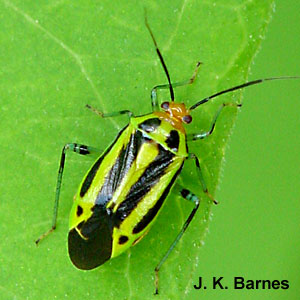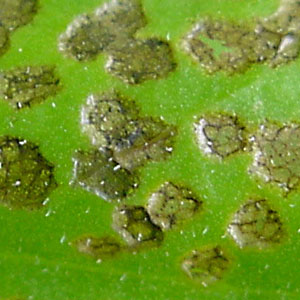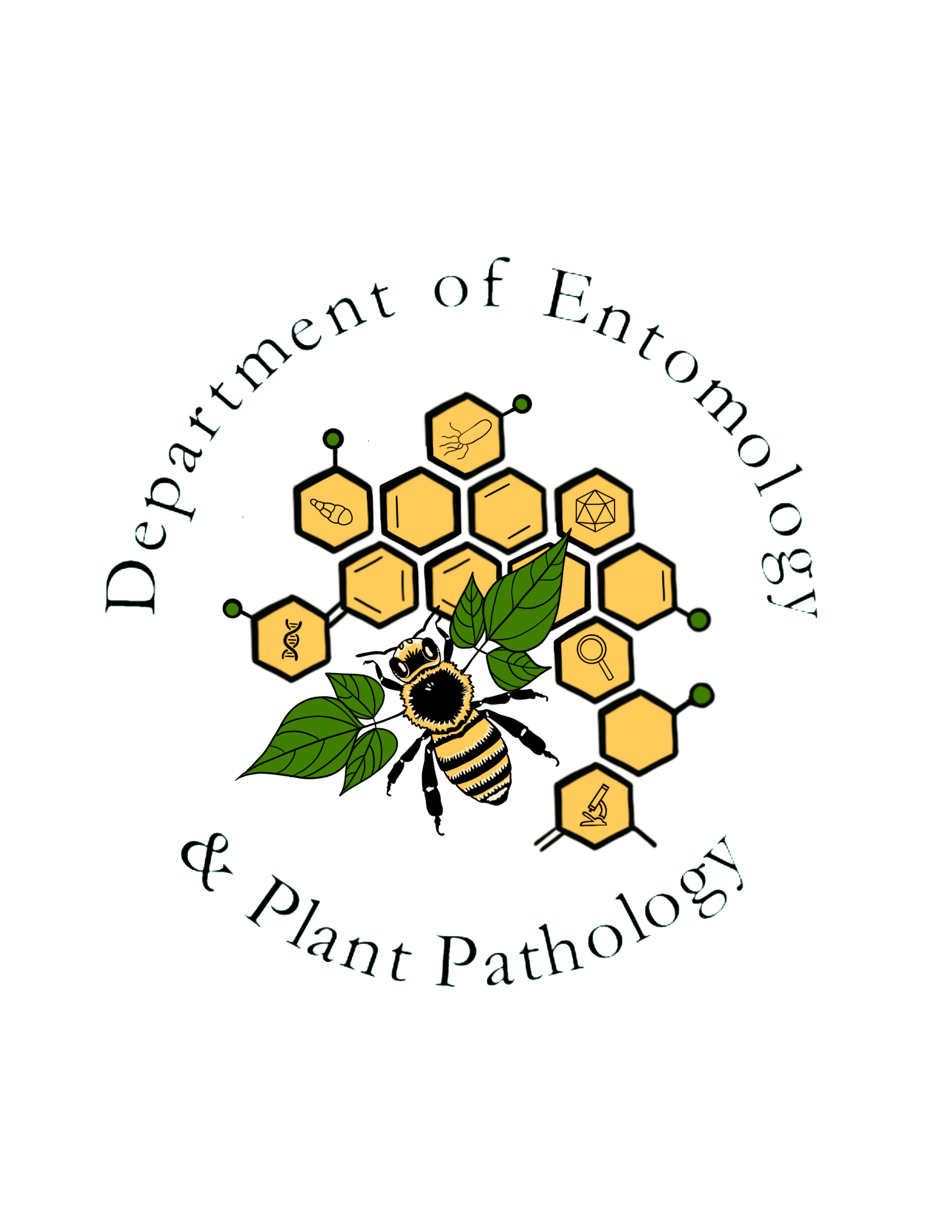Fourlined plant bug
Order: Hemiptera: Heteroptera
Family: Miridae
Genus and species: Poecilocapsus lineatus (Fabricius)

Fourlined plant bugs damage many species of herbaceous and woody plants, causing immediate damage, which may be severe in areas where bug populations are dense. Overwintered eggs, inserted into woody plant tissues, hatch in spring. Nymphs can develop on many species of plants. More than 250 species in 57 families have been reported as hosts, but the bugs seem to prefer certain species in the mint family (Labiatae), nightshade family (Solonaceae), and the aster family (Asteraceae).

The bugs can cause considerable damage to a number of cultivated plant species. In the herb garden, peppermint, spearmint, sage, marjoram, lavender, and hyssop are consistently damaged. In the flower garden, ageratum, coreopsis, dahlia, chrysanthemum, shasta daisy, gaillardia, and wormwood are damaged. In the vegetable garden, parsnips can be seriously damaged, and cucumbers, lettuce, peas, potatoes, radishes, and squash are also attacked. The form of the feeding damage varies with leaf shape, texture, pubescence, and venation. Leaves usually are peppered with small, depressed, round or irregular spots that may become transparent. Plants show symptoms of feeding damage as soon as the bugs’ stylets enter their tissues. The tissues clear immediately, beginning at the point of penetration and radiating out to from a roughly circular spot about 2 mm in diameter. There is one generation per year.
